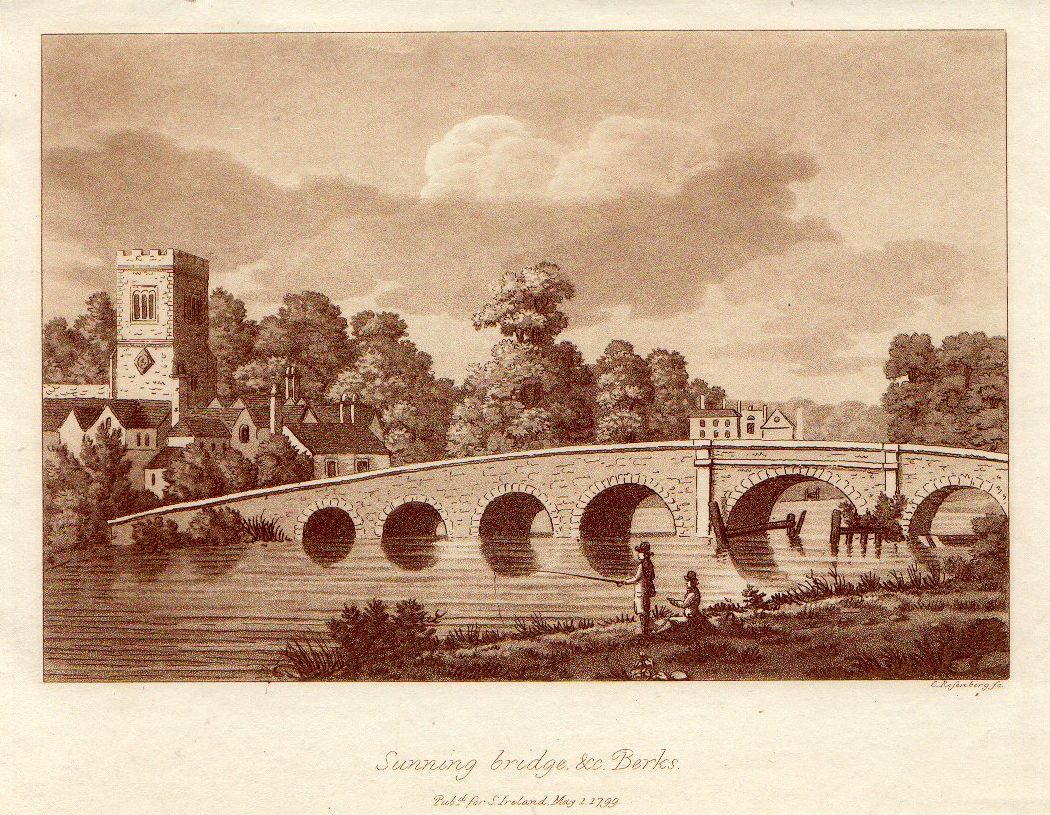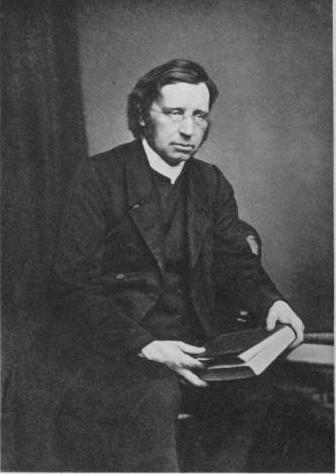|
St Andrew's Church, Sonning
St Andrew's Church is Church of England parish church in a central position in the village of Sonning, close to the River Thames, in the English county of Berkshire. It is notable for its fine array of church monuments and for being the successor of an Anglo-Saxon Cathedral. Location The church is located close to the historic Bishop's Palace, which has long since disappeared apart from some grassy mounds. The historic Bull Inn is immediately next to the church away from the river and is owned by the church. Also adjoining the churchyard is Deanery Gardens, an early 20th-century Edwin Lutyens house with a Gertrude Jekyll garden, well hidden by high walls apart from a good view from the top of the church tower. Close by is the brick-built Sonning Bridge, leading over the Thames into Oxfordshire, with the Great House at Sonning, a historic public house, now a hotel and restaurant, next to it on the river. History Sonning was the location of an early Saxon minster ... [...More Info...] [...Related Items...] OR: [Wikipedia] [Google] [Baidu] |
Sonning
Sonning is a village and civil parish in Berkshire, England, on the River Thames, east of Reading. The village was described by Jerome K. Jerome in his book ''Three Men in a Boat'' as "the most fairy-like little nook on the whole river". Geography The parish of Sonning originally included Charvil, Woodley and Earley and, before the formation of civil parishes in 1866, was a cross-county-boundary parish containing Sonning Eye, Dunsden Green and Playhatch in Oxfordshire as well. It is now much smaller and triangular shaped. The ecclesiastical parish of Sonning continues to include Sonning, Charvil and Sonning Eye. The northwestern boundary is formed by the River Thames before passing through the middle of the Thames Valley Park. The southern border follows the railway line. The northeastern boundary travels over Charvil Hill and follows the edge of the housing at Charvil itself until it reaches the confluence of St Patrick's Stream with the Thames, near St Patrick's Bridge. T ... [...More Info...] [...Related Items...] OR: [Wikipedia] [Google] [Baidu] |
Gertrude Jekyll
Gertrude Jekyll ( ; 29 November 1843 – 8 December 1932) was a British horticulturist, garden designer, craftswoman, photographer, writer and artist. She created over 400 gardens in the United Kingdom, Europe and the United States, and wrote over 1000 articles for magazines such as ''Country Life'' and William Robinson's ''The Garden''. Jekyll has been described as "a premier influence in garden design" by British and American gardening enthusiasts. Early life Jekyll was born at 2 Grafton Street, Mayfair, London, the fifth of the seven children of Captain Edward Joseph Hill Jekyll, an officer in the Grenadier Guards, and his wife Julia, ''née'' Hammersley. In 1848 her family left London and moved to Bramley House in Surrey Surrey () is a ceremonial and non-metropolitan county in South East England, bordering Greater London to the south west. Surrey has a large rural area, and several significant urban areas which form part of the Greater London Built-up Area. . ... [...More Info...] [...Related Items...] OR: [Wikipedia] [Google] [Baidu] |
The Ecclesiologist
The Cambridge Camden Society, known from 1845 (when it moved to London) as the Ecclesiological Society,History of the Society Ecclesiological Society was a learned architectural society founded in 1839 by students at to promote "the study of |
Sir Thomas Rich, 1st Baronet
Sir Thomas Rich, 1st Baronet (c. 1601 – 15 October 1667) was an English merchant and politician who sat in House of Commons in 1660. He established Sir Thomas Rich's School, a grammar school. Sir Thomas Rich's School, Gloucester Rich was born in , son of Thomas Rich, an alderman of the city, and Anne, daughter of Thomas Machin, in 1601. He was sent to school in and went on to st ... [...More Info...] [...Related Items...] OR: [Wikipedia] [Google] [Baidu] |
Penguin Books
Penguin Books is a British publishing, publishing house. It was co-founded in 1935 by Allen Lane with his brothers Richard and John, as a line of the publishers The Bodley Head, only becoming a separate company the following year."About Penguin – company history" , Penguin Books. Penguin revolutionised publishing in the 1930s through its inexpensive paperbacks, sold through Woolworths Group (United Kingdom), Woolworths and other stores for Sixpence (British coin), sixpence, bringing high-quality fiction and non-fiction to the mass market. Its success showed that large audiences existed for serious books. It also affected modern British popular culture significantly through its books concerning politics, the arts, and science. Penguin Books is now an imprint (trade name), imprint of the ... [...More Info...] [...Related Items...] OR: [Wikipedia] [Google] [Baidu] |
Pevsner Architectural Guides
The Pevsner Architectural Guides are a series of guide books to the architecture of Great Britain and Ireland. Begun in the 1940s by the art historian Sir Nikolaus Pevsner, the 46 volumes of the original Buildings of England series were published between 1951 and 1974. The series was then extended to Scotland, Wales and Ireland in the late 1970s. Most of the English volumes have had subsequent revised and expanded editions, chiefly by other authors. The final Scottish volume, ''Lanarkshire and Renfrewshire'', was published in autumn 2016. This completed the series' coverage of Great Britain, in the 65th anniversary year of its inception. The Irish series remains incomplete. Origin and research methods After moving to the United Kingdom from his native Germany as a refugee in the 1930s, Nikolaus Pevsner found that the study of architectural history had little status in academic circles, and that the amount of information available, especially to travellers wanting to inform themselv ... [...More Info...] [...Related Items...] OR: [Wikipedia] [Google] [Baidu] |
Henry Woodyer
Henry Woodyer (1816–1896) was an English architect, a pupil of William Butterfield and a disciple of A. W. N. Pugin and the Ecclesiologists. Life Woodyer was born in Guildford, Surrey, England, in 1816, the son of a successful, highly respected surgeon, who owned Allen House in the Upper High Street. His mother came from the wealthy Halsey family who owned Henley Park, just outside Guildford. Woodyer was educated first at Eton College, then at Merton College, Oxford. As a result, he could claim to be one of the best educated architects since Sir Christopher Wren. Whilst at Oxford, he became involved in the Anglican high church movement and throughout his career he saw his work as an architect as a means of serving the church. Works Churches (new) * Holy Innocents' Church, Highnam, Gloucestershire (including sexton's cottage), 1847 * St Michael's Church, Camberley, Surrey, 1849-51 * St Paul's Church, Sketty, Swansea, Glamorgan, 1849–50, for John Henry Vivian * Holy Je ... [...More Info...] [...Related Items...] OR: [Wikipedia] [Google] [Baidu] |
Victorian Restoration
The Victorian restoration was the widespread and extensive refurbishment and rebuilding of Church of England churches and cathedrals that took place in England and Wales during the 19th-century reign of Queen Victoria. It was not the same process as is understood today by the term building restoration. Against a background of poorly maintained church buildings, a reaction against the Puritan ethic manifested in the Gothic Revival, and a shortage of churches where they were needed in cities, the Cambridge Camden Society and the Oxford Movement advocated a return to a more medieval attitude to churchgoing. The change was embraced by the Church of England which saw it as a means of reversing the decline in church attendance. The principle was to "restore" a church to how it might have looked during the " Decorated" style of architecture which existed between 1260 and 1360, and many famous architects such as George Gilbert Scott and Ewan Christian enthusiastically accepted commis ... [...More Info...] [...Related Items...] OR: [Wikipedia] [Google] [Baidu] |
Victorian Architecture
Victorian architecture is a series of architectural revival styles in the mid-to-late 19th century. ''Victorian'' refers to the reign of Queen Victoria (1837–1901), called the Victorian era, during which period the styles known as Victorian were used in construction. However, many elements of what is typically termed "Victorian" architecture did not become popular until later in Victoria's reign, roughly from 1850 and later. The styles often included interpretations and eclectic revivals of historic styles ''(see Historicism)''. The name represents the British and French custom of naming architectural styles for a reigning monarch. Within this naming and classification scheme, it followed Georgian architecture and later Regency architecture, and was succeeded by Edwardian architecture. Although Victoria did not reign over the United States, the term is often used for American styles and buildings from the same period, as well as those from the British Empire. Victorian arc ... [...More Info...] [...Related Items...] OR: [Wikipedia] [Google] [Baidu] |
See Of Ramsbury And Sonning
The Bishop of Ramsbury was an episcopal title used by medieval English-Catholic diocesan bishops in the Anglo-Saxon English church. The title takes its name from the village of Ramsbury in Wiltshire, and was first used in the 10th and 11th centuries by the Anglo-Saxon Bishops of Ramsbury. In Saxon times, Ramsbury was an important location for the Church, and several of the early bishops went on to become Archbishops of Canterbury. The ancient bishopric of Ramsbury was created in 909 by Plegmund, Archbishop of Canterbury, as part of a division of the two West Saxon bishoprics into five smaller ones. Wiltshire and Berkshire were taken from the bishopric of Winchester to form the new diocese of Ramsbury. It was occasionally referred to as the bishopric of Ramsbury and Sonning. In 1058 it was joined with the bishopric of Sherborne to form the diocese of Sarum (Salisbury), and the see was translated to Old Sarum in 1075. Medieval bishops diocesan References Further reading * Powi ... [...More Info...] [...Related Items...] OR: [Wikipedia] [Google] [Baidu] |
Anglo-Saxon
The Anglo-Saxons were a Cultural identity, cultural group who inhabited England in the Early Middle Ages. They traced their origins to settlers who came to Britain from mainland Europe in the 5th century. However, the ethnogenesis of the Anglo-Saxons happened within Britain, and the identity was not merely imported. Anglo-Saxon identity arose from interaction between incoming groups from several Germanic peoples, Germanic tribes, both amongst themselves, and with Celtic Britons, indigenous Britons. Many of the natives, over time, adopted Anglo-Saxon culture and language and were assimilated. The Anglo-Saxons established the concept, and the Kingdom of England, Kingdom, of England, and though the modern English language owes somewhat less than 26% of its words to their language, this includes the vast majority of words used in everyday speech. Historically, the Anglo-Saxon period denotes the period in Britain between about 450 and 1066, after Anglo-Saxon settlement of Britain, th ... [...More Info...] [...Related Items...] OR: [Wikipedia] [Google] [Baidu] |
Sonning Bridge - 1799
Sonning is a village and civil parish in Berkshire, England, on the River Thames, east of Reading. The village was described by Jerome K. Jerome in his book ''Three Men in a Boat'' as "the most fairy-like little nook on the whole river". Geography The parish of Sonning originally included Charvil, Woodley and Earley and, before the formation of civil parishes in 1866, was a cross-county-boundary parish containing Sonning Eye, Dunsden Green and Playhatch in Oxfordshire as well. It is now much smaller and triangular shaped. The ecclesiastical parish of Sonning continues to include Sonning, Charvil and Sonning Eye. The northwestern boundary is formed by the River Thames before passing through the middle of the Thames Valley Park. The southern border follows the railway line. The northeastern boundary travels over Charvil Hill and follows the edge of the housing at Charvil itself until it reaches the confluence of St Patrick's Stream with the Thames, near St Patrick's Bridge. The n ... [...More Info...] [...Related Items...] OR: [Wikipedia] [Google] [Baidu] |









